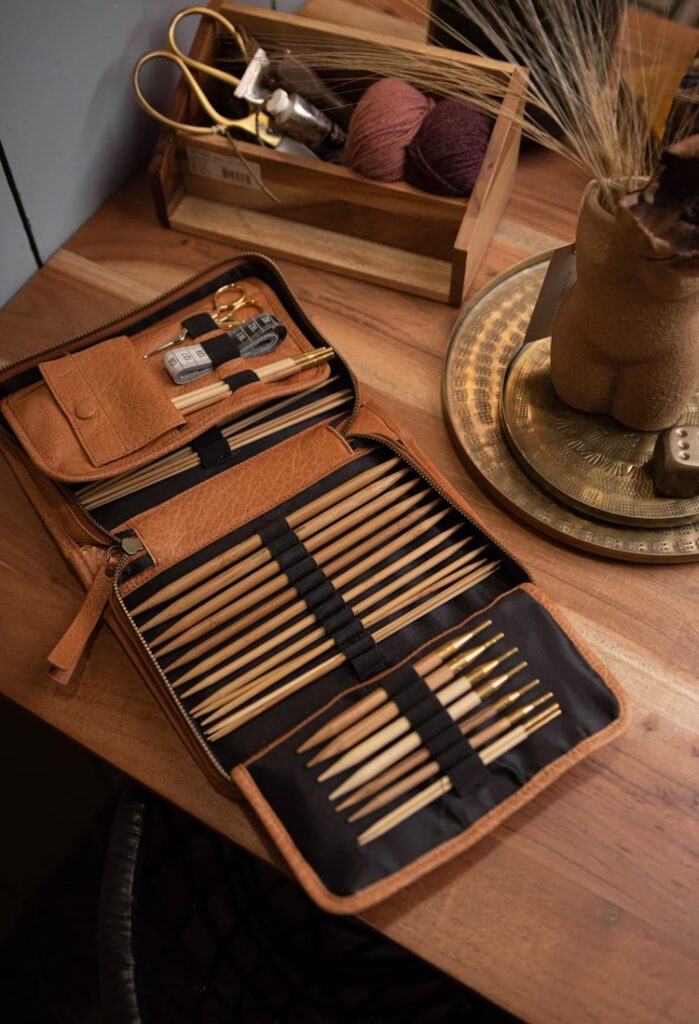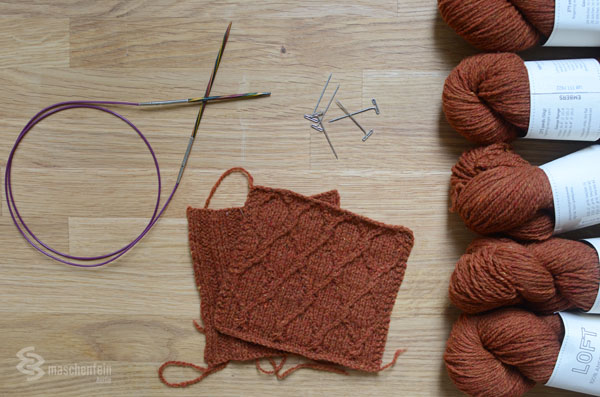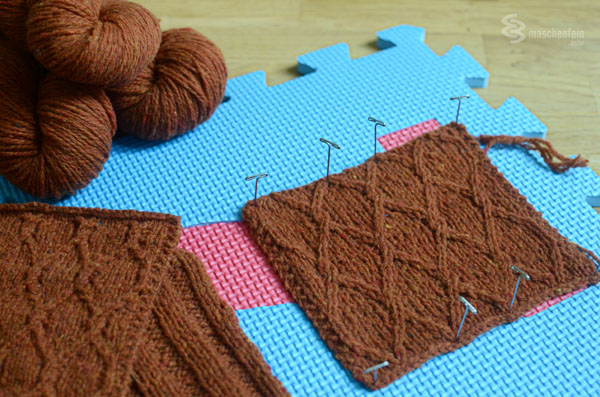As you can follow on Instagram, I am now quite a bit further with Chainlink for my Brooklyn Tweed Knit Along. The front part will be finished the days. Nevertheless, a few words on the subject of the stitch test, which is so important for me in this project. I love stitch tests. So in the meantime.
There was, of course, a time when I shirked it and thought "fits then already". But it didn't always fit. Stitch samples are so important and of course very different depending on the needles. The tunic "Chainlink" contains various pattern passages, for which I knitted as the pattern also dutifully stitch samples in the specified needle size. Did not quite matchinstructionsttern, so knitted again in adjusted needle size and found that the pattern then also looked much nicer.
The use of the appropriate needle size is not only relevant for the size of the garment, but also for the stitch definition and the pattern. Wash and block the test pieces after knitting. This can also significantly change the stitch definition.
How do you handle it? Do you knit swatches? Do you like them? Do you archive them?
Addendum: I pin my stitch samples or also the knitted finished parts for stretching on these puzzle mats(there are also in expensive at Knit Pro). I use the T-needles for this,
because they are certainly rustproof.
For very large parts I have such tension wires
, with which I have also made good experiences so far.
 In the mood for spring? Here you can find spring yarns
In the mood for spring? Here you can find spring yarns  Esther Sweater Baby
Esther Sweater Baby  We have new Muud products in the store
We have new Muud products in the store  You can find all Maschenfein pattern here
You can find all Maschenfein pattern here



Thank you for your comment!
Please be patient until it appears on the site, as we approve all comments manually.